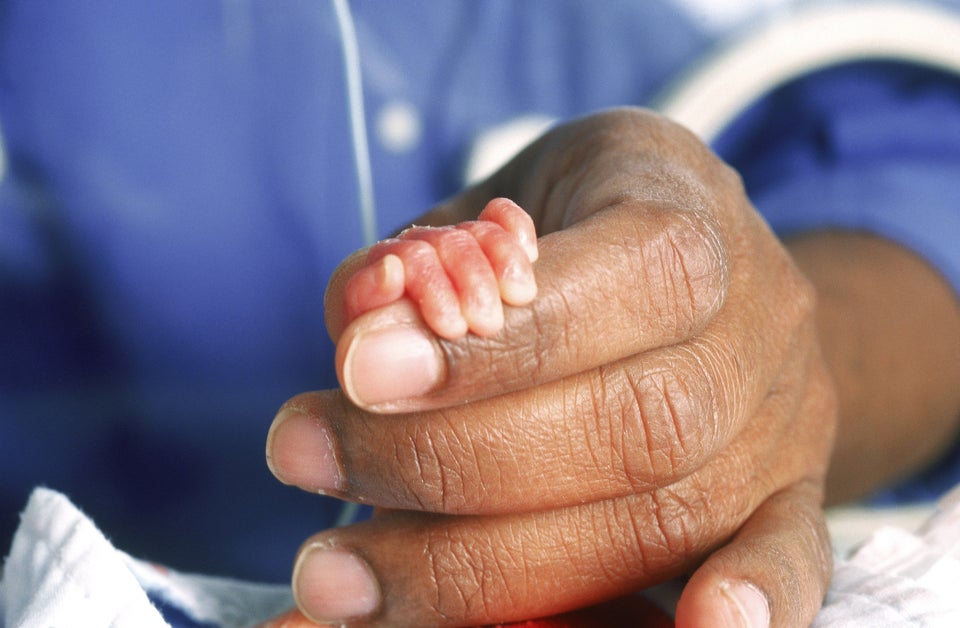
The American Academy of Pediatrics has taken a clear stance on screen time for children under the age of 2, discouraging children under the age of 2.
"A child's brain develops rapidly during these first years, and young children learn best by interacting with people, not screens," the AAP has said. (Whether or not parents are heeding that message is another story -- according to the AAP, surveys suggest 40 percent of children have watched some sort of video by the time they are 5-months-old, and by 2 years, 90 precent of children watch some form of electronic media, often up to two hours per day.)
But the AAP last weighed in with an official policy statement on screen time in babies and toddlers in 2011, and began working on that statement when iPads weren't even a thing. "You have to put it in context and remember that in that policy, we were specifically addressing passive screen time, or passive video watching on whatever screen that may be," Dr. Ari Brown, a pediatrician and lead author on that statement. "So, if your kid is watching a video of Dora on your phone, that's passive video watching." More active screen time, on the other hand, involves some level of interaction, either with a grandparent (as in the case of video chat) or app.
An updated policy statement is in the works, Brown said, expected some time this fall. It will take into account some of the newer forms of technology that have really exploded in the past few years. Until then, here's where some experts stand on some of the often overlooked screen exposures younger children are often confronted with:
1. iPhone Photos and Videos
If your first instinct when your baby or toddler reaches a new milestone is to grab your phone and record it, you're not alone. Fortunately, Brown said snapping videos and photos is probably fine -- at least from a developmental perspective.
"There's some data out there that suggests that if your child is holding the phone up to their ear for a long period of time, that may not be good for their ears," she said. But as long as you're not playing the video you just took back to your child by holding the phone directly up against his or her head, there's no research suggesting you're doing harm by using your phone to record your chid.
Just remember, playing the video back to your child is a form of passive viewing, which the AAP discourages. And from a being-in-the-moment standpoint, there are very clear benefits to putting that phone down and soaking up what's unfolding in front of you.
2. Educational Apps
Again, doctors started working on the most recent AAP statement pre-iPad, so apps have since exploded in a way they hadn't yet back then. However, the academy did take into account video programs that claim to be educational, and took a skeptical stance on their potential merits: "Unstructured play time is more valuable for the developing brain than electronic media. Children learn to think creatively, problem solve, and develop reasoning and motor skills at early ages through unstructured, unplugged play."
Dr. Amanda Porro, a pediatrician with Nicklaus Children's Hospital in Miami, told The Huffington Post she believes interactive apps are a little better than fully passive screen time, because there's at least some give-and-take.
"But when they're under 2, children's brains are still developing, so they don't relate a lot of things they see on a screen to real life," she said. "I'd say, give them something to touch, something to scribble with, something to feel in their hands." The more real world experience kids have before they start interacting with screens, the better, Porro added.
3. Video Chat
If there's one screen exposure the experts seem pretty comfortable with, it's video chat or Skype. Studies by experts like Patricia Kuhl, a renowned researcher on early language and brain development, have looked at the question of whether children really grasp what they're doing when they video chat with, say, a grandparent, Brown said. "Basically, what [those experts] have found is that kids around the age of 12 months and up can actually engage with a grandparent on a video screen if the grandparent is seated in a way where they're making eye contact with the child," she said. "So, when you're talking about that format and asking if there is value there? I say yes, there is -- to connect with family members and interact. That is an educational opportunity on some level."
Porro agreed, adding that it's really up to families to use common sense. A younger baby may not understand what he or she is seeing on the screen, or grasp that there is a real person on the other end interacting with them. "A 5-year-old is going to know, 'Oh, that's grandma on the other line,'" she said. "With babies, it's going to be more like watching TV."
Also on HuffPost:
